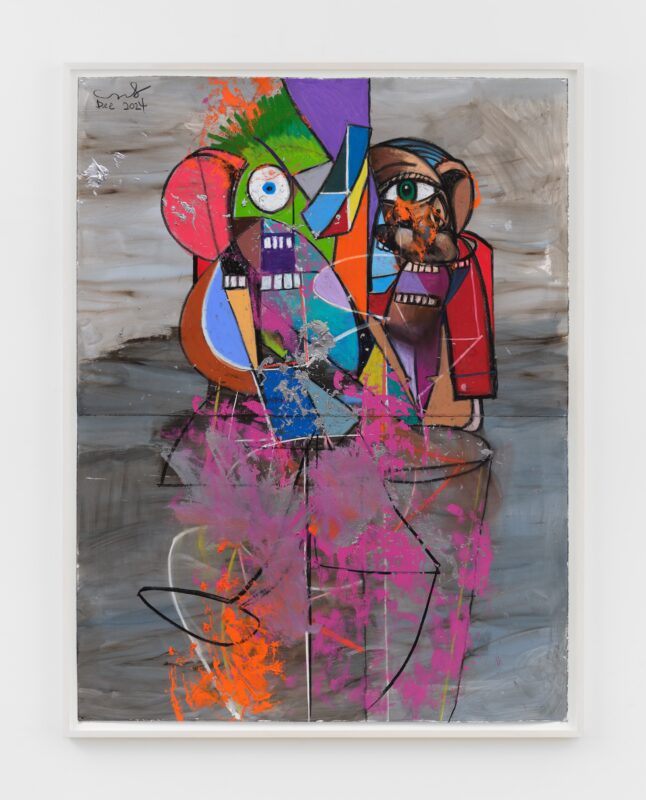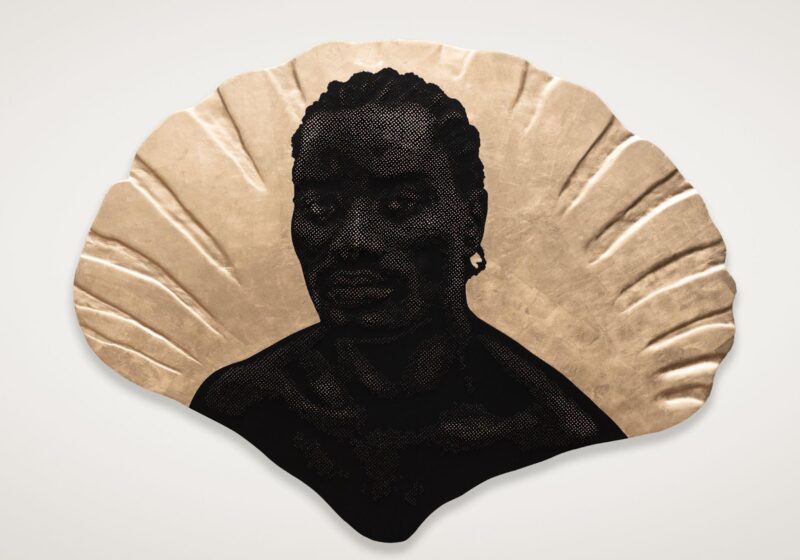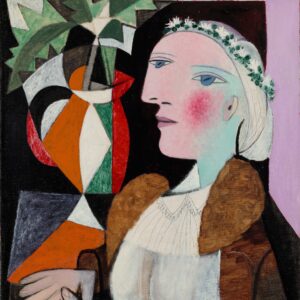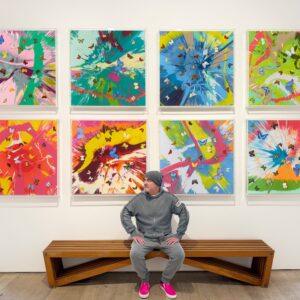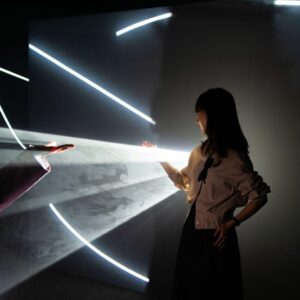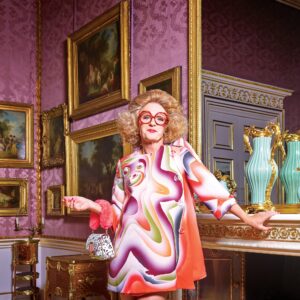Art Miami celebrates 34 years in operation this year and is the city’s longest running art fair. Its sister fair, CONTEXT art miami, erected on the same lot and specialising in street art and artists representing themselves, turns 12. The massive tents are charged with energy and deliver a quintessentially Miami kind of charm. To guide your exploration, here are 10 artworks that captured our attention.
Minos Azahares, The Cuban Hunger, 10k Contemporary.
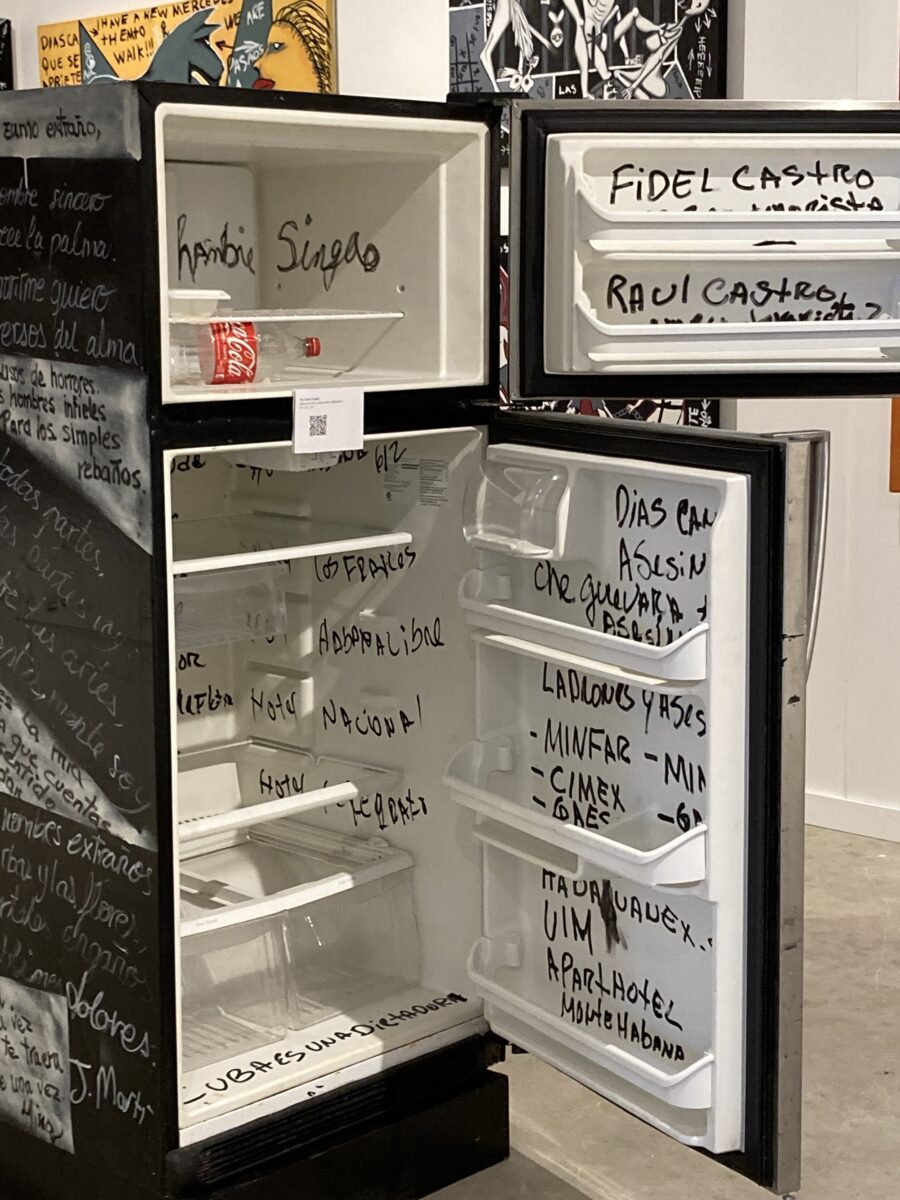
Surrounded by a chorus of artworks that resemble candy, ice cream, or reimagined Disney characters, a refrigerator sits in the middle of the space. Its door hangs open unceremoniously to reveal a coke bottle full of water and a collection of poetic statements scrawled across its inner and outer surfaces in Spanish. “I am hungry,” one scribble reads. Nicknamed “North Cuba”, Miami’s culture is not only defined by poppy patterned sculptures and wealthy real estate investors with questionable taste, but also by its Cuban influence, in which it has been steeped. Given how many unhoused and struggling people can be observed in the span of time it takes to walk from any given parking space in Downtown Miami to the fairgrounds, this profound artwork speaks to a timely scarcity felt by populations worldwide. The reality of severe economic struggle can be felt in any kind of failed social system, communist or not.
Kenny Nguyen, Eruptions Series No. 45, Sundaram Tagore Gallery
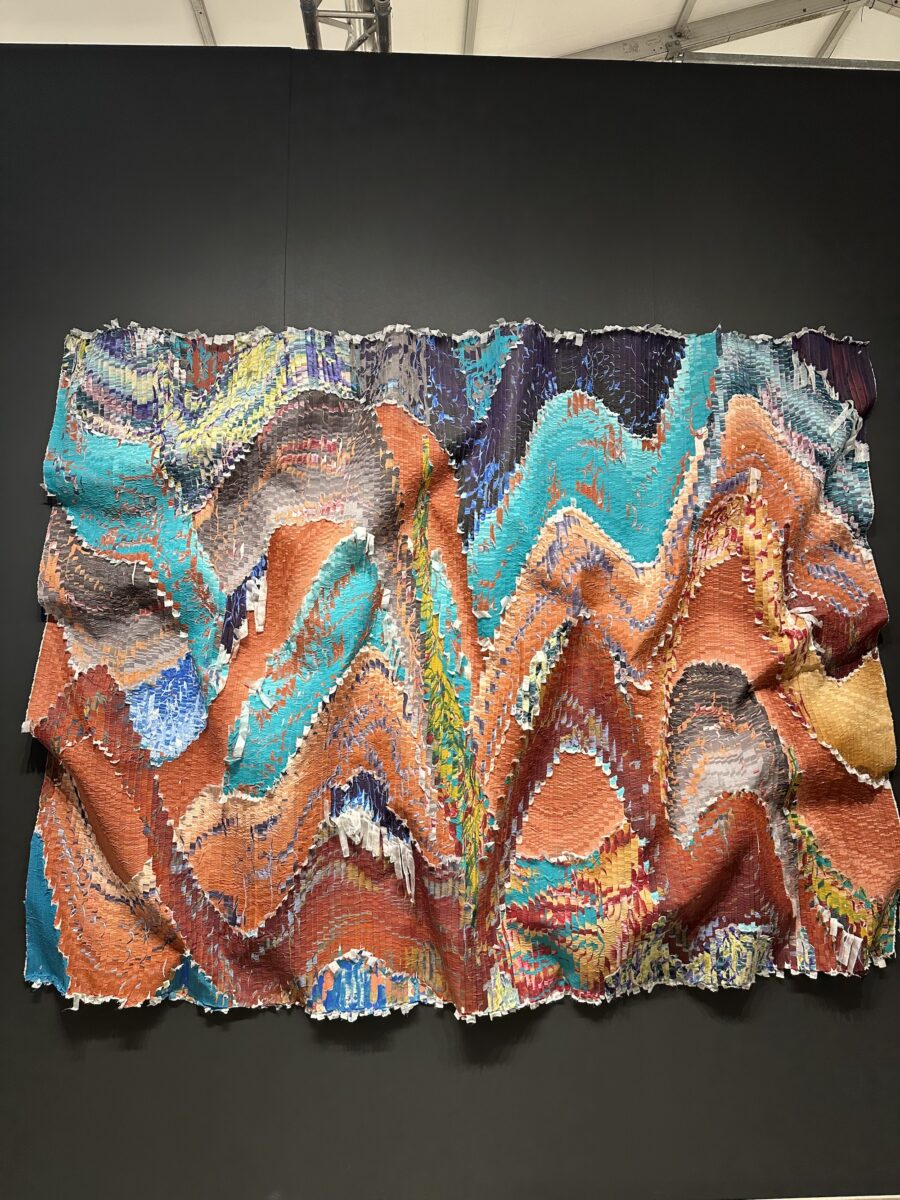
Although this sculptural textile painting has an uncanny resemblance to the mineral deposits that can be found inside the red rocks of Utah or Argentina, they are inspired by travels to Vietnam. Mounted in a way that accentuates the natural folds and bows of the fabric, the shape created by the surface of the work has a delicate and ephemeral topography that simulates mountains, soundwaves, and the unpredictable contours characteristic to the natural world. The undulating cadence of colour swaths are created by countless hand-cut silk swatches that are woven together to achieve an almost digital yet distinctly analogue aesthetic.
George Condo, Fixtures on a Blue Couch, Opera Gallery.

In this beautifully grotesque scene, nothing really adds up, yet it is thoroughly convincing. Logical questions, such as whether it is inside or outside, two people or four, become absorbed and overshadowed by the strength of the “psychologically cubist” model study, where different personalities and emotive states supernaturally coexist through a single grimace: one face to carry them all. The painting is eery and full of painterly, artistic license.
Lluis Barba, Warhol, Aldo Castillo Gallery.
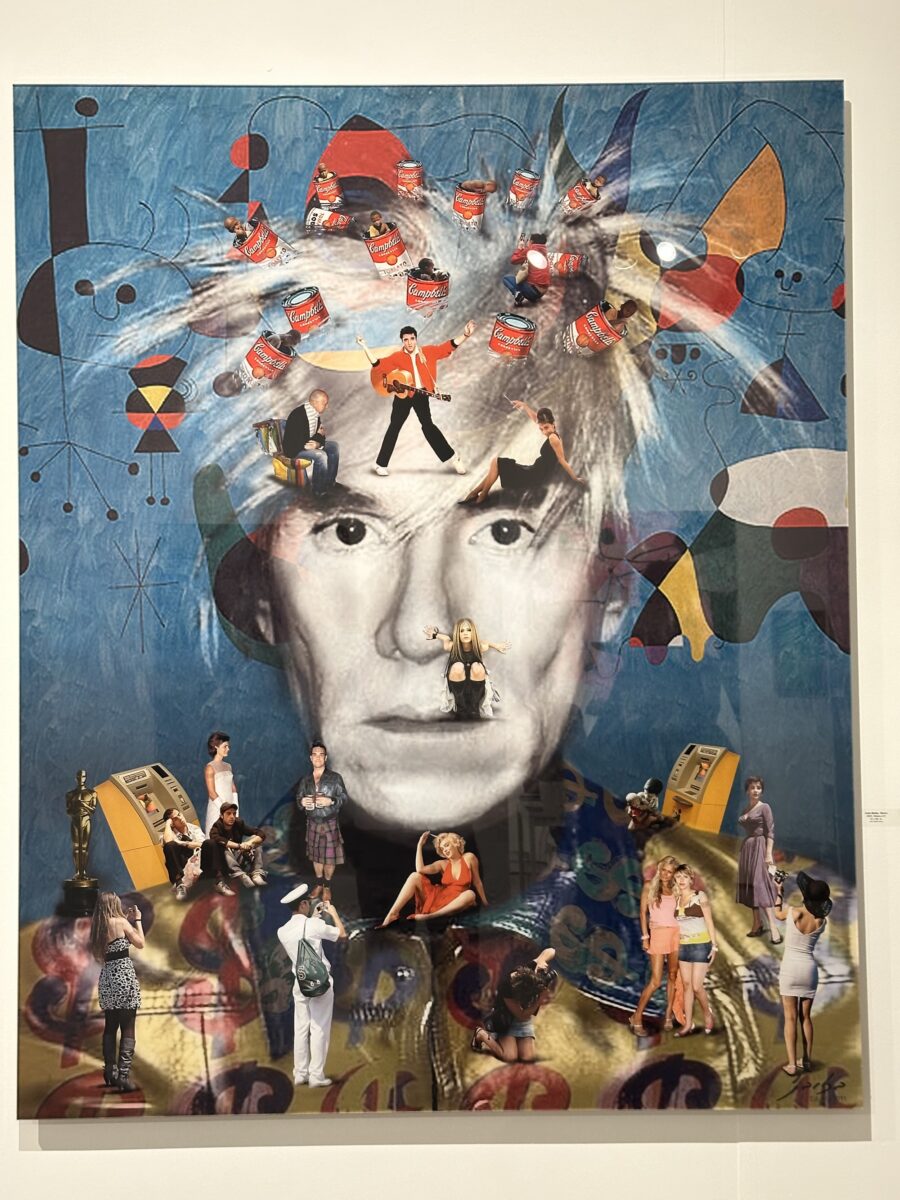
Sometimes the question of what is “good” art becomes less about what looks nice, makes us feel nice, or even appeals to us, but rather what manages to have a presence, a voice, and an impact. Like the notion of celebrity, loving to hate it can make a work as successful – if not more so – than a work that is beautiful, virtuous, or good. This canvas manages to pack all the most divisive pop culture personalities into one landscape. Everyone is there; from Paris Hilton to Avril Lavigne to Warhol himself. What these people have in common is the apparent success they achieved from performing a character and perhaps exploiting the figures in the upper portion of the piece. Not necessarily a genuine strategy, but an arguably “good” one nonetheless.
Peter Demetz, Liquid Art System.
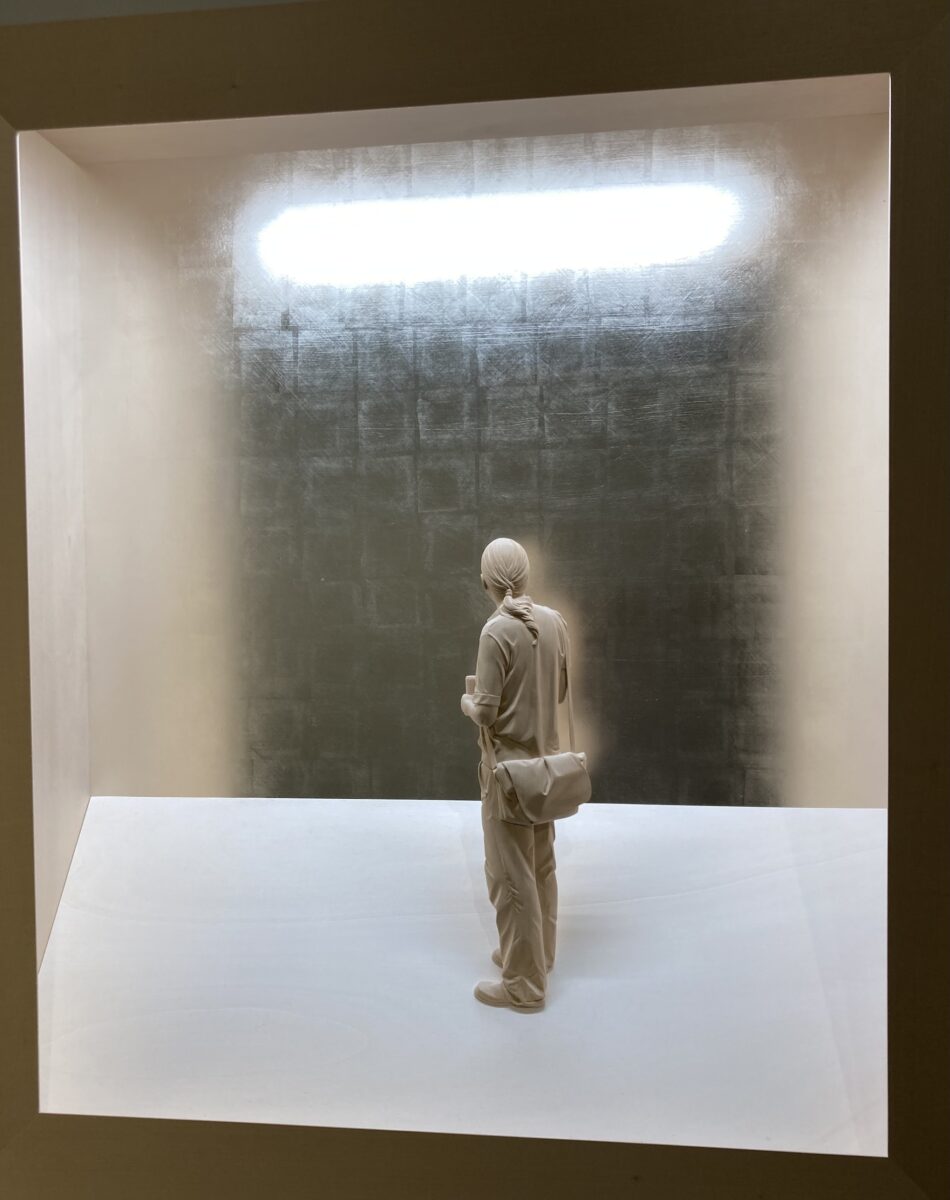
Staged inside a fishbowl of hyper-consumption, where the viewer finds themself overwhelmed by surplus, this poignant and self referential work plays masterfully with the exhibitionary complex. Demetz captures figures in quiet breaths of the in-between and uses reflective surfaces to allow light to artificially create a feeling of exaggerated depth. It feels particularly fitting inside the liminal expanse created by an enormous art fair tent, outfitted with a dizzying number of lights and pathways that create an illusion of an enduring space, when in reality it is as temporal as a moment of reflection.
Super Buddha. Street artist turned art fair darling with online merch
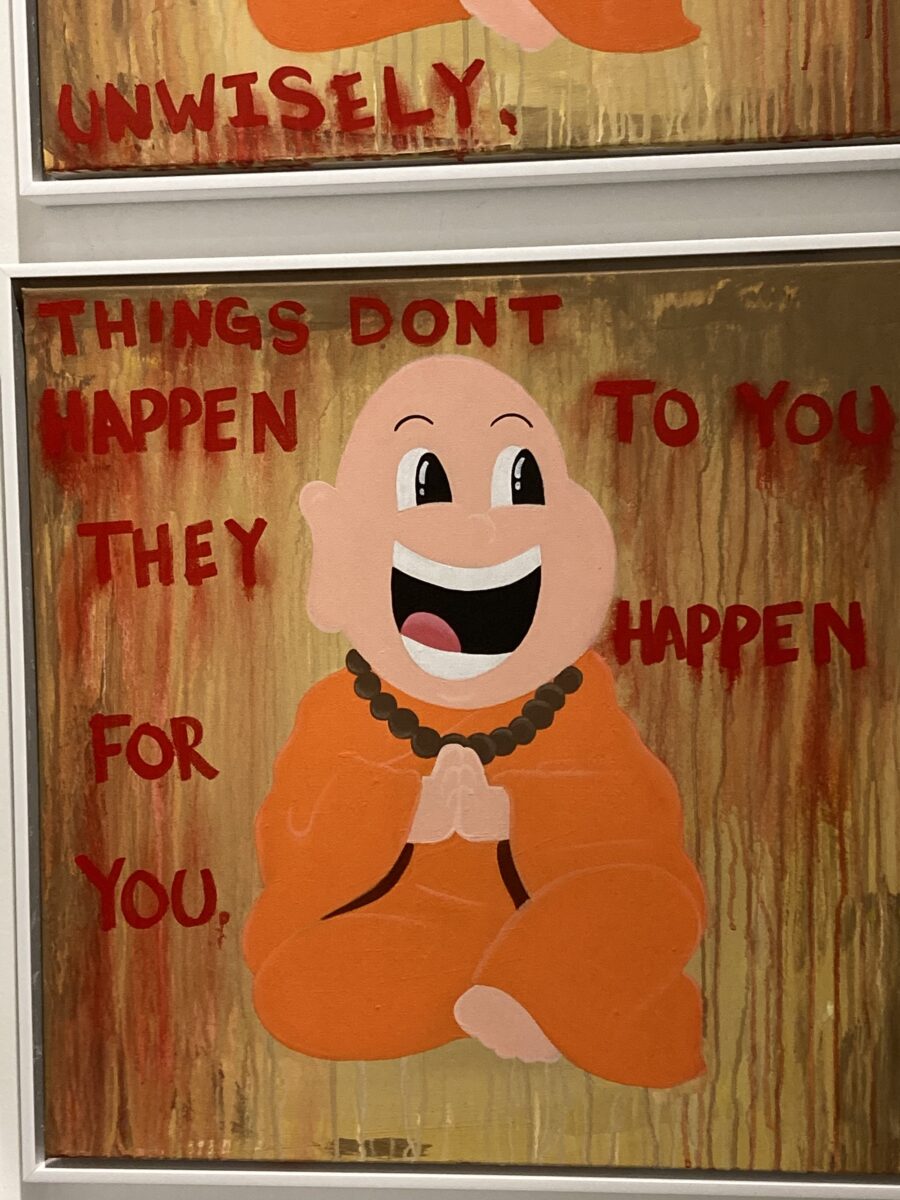
Super Buddha embodies the paradox that is Miami: naturally beautiful yet synthetically camp. He has somehow, quite unbuddhistly, found a way to successfully fetishise and commodify a religion that prides itself on disembodying the enlightened self from materialism. Even so, it’s hard to criticise an artist for buttering their bread. SB’s first monumental public art installation was exhibited in 2020 on Miami’s Lincoln Road: a five-foot tall, red “Good Fortune” Buddha was cast in resin and loosely modelled after the traditional laughing Buddha. Is it cultural appropriation or is it just fun and we should shut up and enjoy it?
Kim Seok Jung, Daily to Generation, Isart.
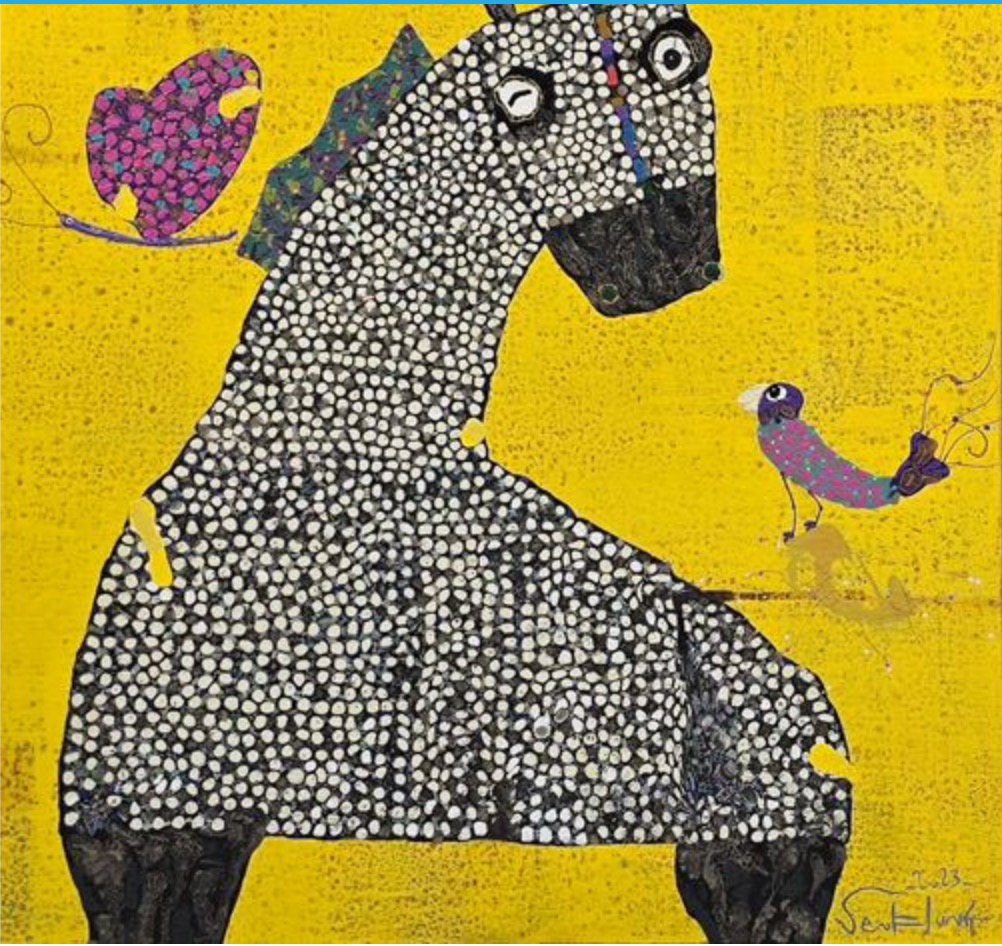
A recurring theme in his work is the magical horse; a chimerical creature whose primordial shape feels more like a vessel for brilliant depth of colour and grain. Distinguished by his colouring technique, Kim Seok Jung employs a unique diffusion process on paper to mix colours in applied layers instead of separately in paint. The result is a complex surface with undertone, texture, and variation.
Daniel Allen Cohen, Gilded Icons.
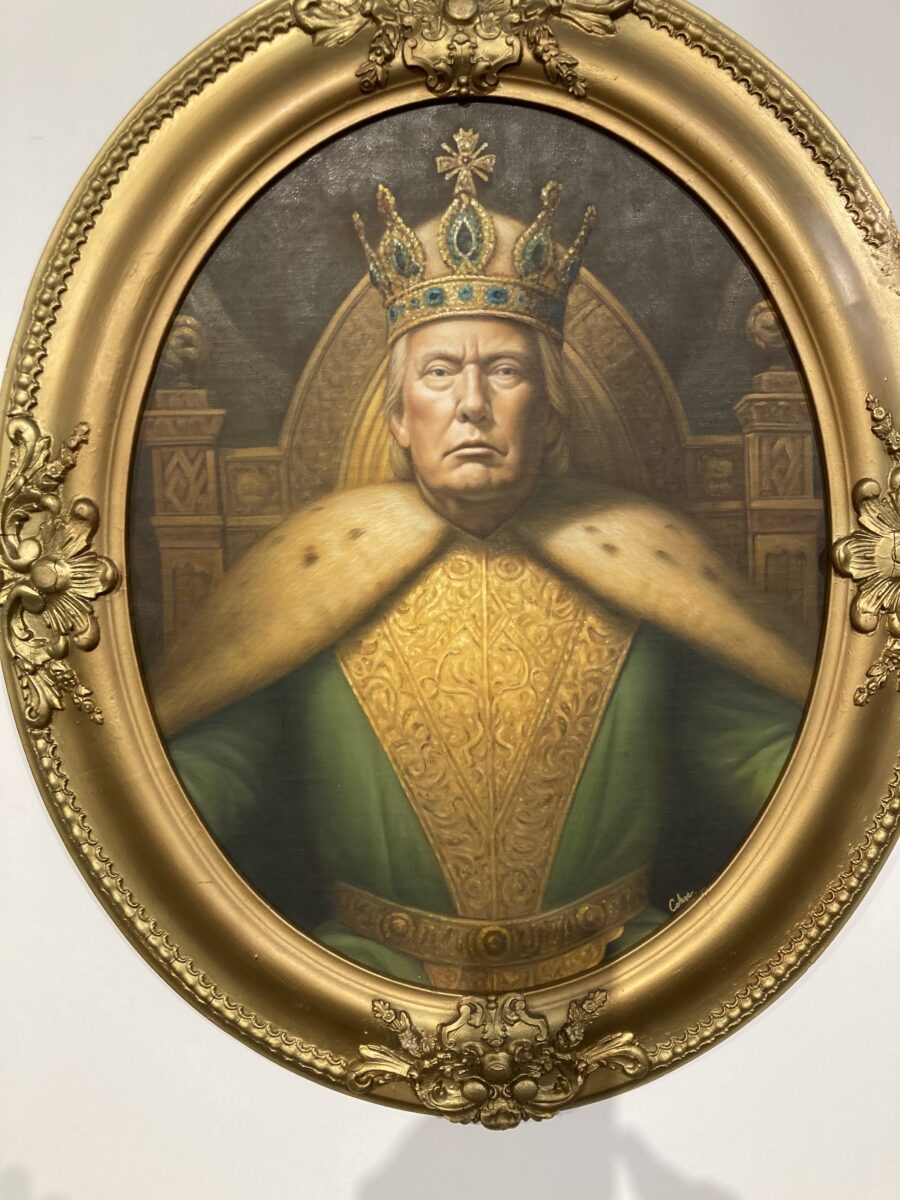
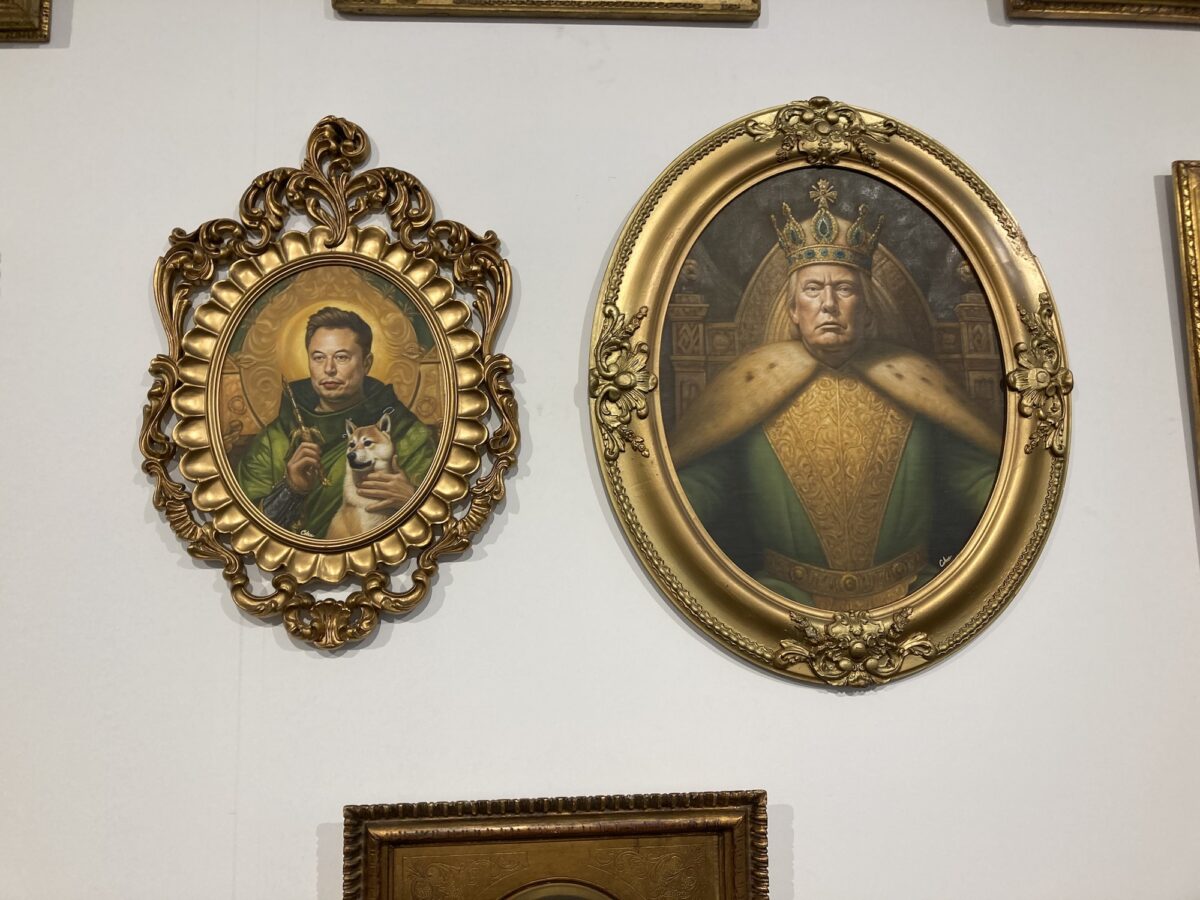
In an art mimics life moment, an ominous warning is portrayed in the form of two influential figures reimagined as Renaissance royalty. By depicting Donald Trump and Elon Musk in this light, Cohen presents the severely hierarchal constructs of modern power structures, and perhaps suggests that nothing much has changed over the past 500 years. The idolised portraits highlight that these two figures have become seemingly irreversibly exempt from contemporary social standards, laws, and behavioural restrictions. If this kind of carte blanche is directly related to excessive wealth, what does it mean for the rest of humanity?
Carole Feuerman, Bartoux.
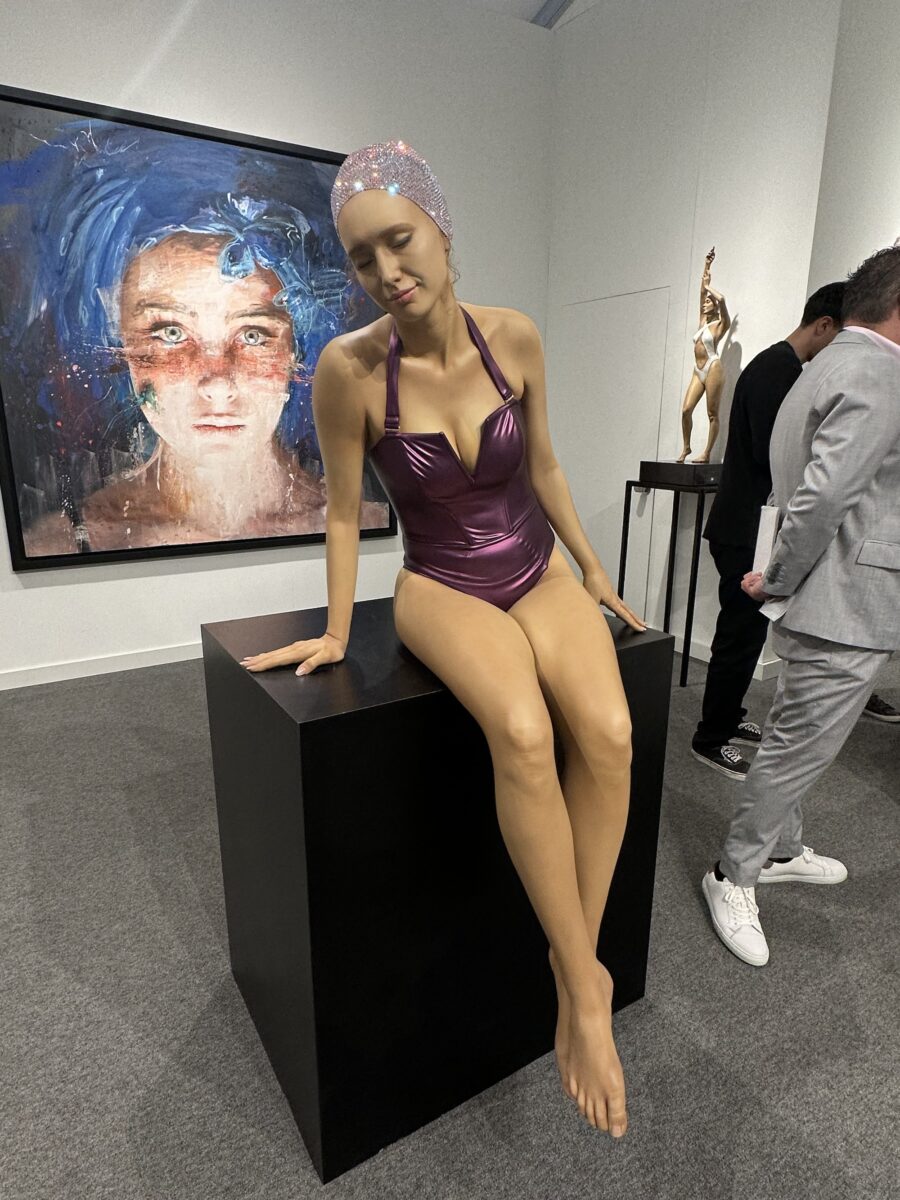
Sometimes the art world seems to get a get-out-of-jail free card when the rest of the world must evolve. In an increasingly body-positive culture that is finally beginning to embrace not only different shapes and body types, but also the ubiquity of flaws, imperfections, and the odd bit of cellulite here and there, Carole Feuerman’s “hyper realistic” sculptures of wet swimmers seem decidedly unrealistic in their depiction of the woman’s flawless, slender, busty body. On the other hand, such idealistic portrayals are not unusual in art – in fact many might argue that delineation of faultlessness may inspire, motivate, and sustain dreams.
Alex Khlebnikov, External Seasons @khlebnikovart
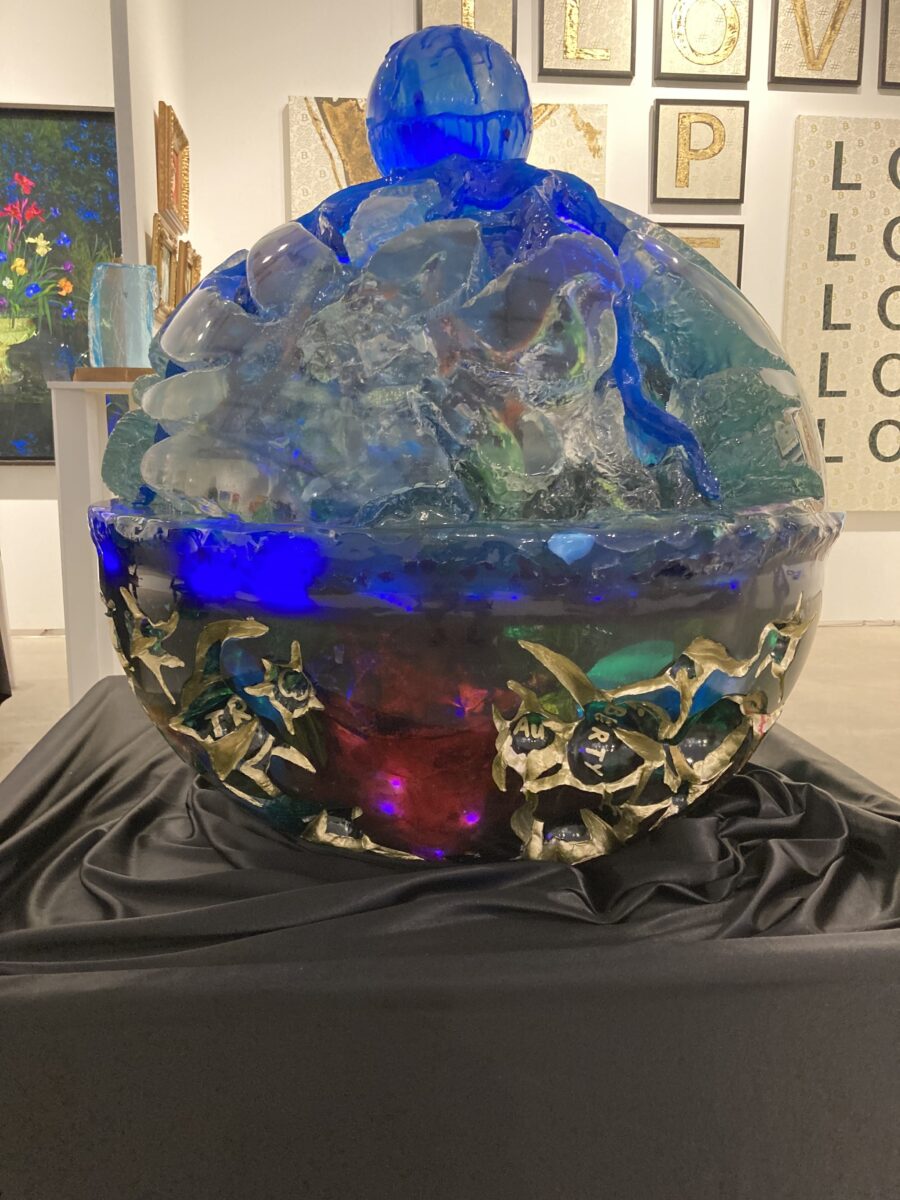
It can be refreshing in extreme environments – instead of swimming against the current – to lean into it. Executed in kitch-fab glory, this giant epoxy sculpture resembles something familiar yet still strikingly fantasical; like an oversized snitch straight out of Harry Potter’s private art collection. Art fairs should be fun and this certainly is.
Art Miami, December 3rd-8th 2024, One Herald Plaza artmiami.com CONTEXT art miami, December 3rd-8th 2024, One Herald Plaza, contextartmiami.com
All Photos by Lyle Prescott

